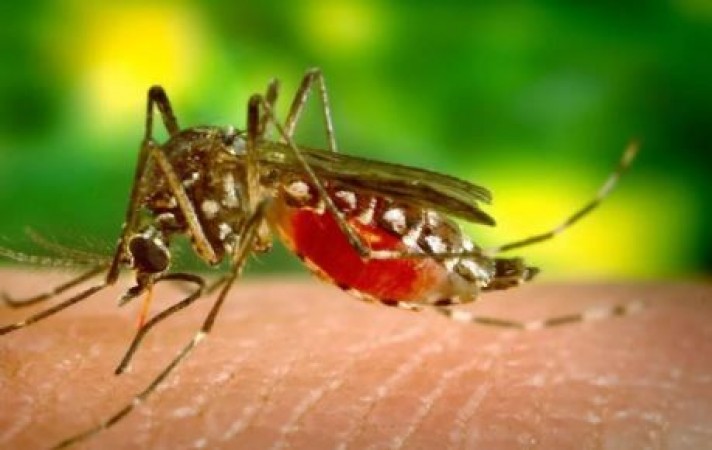
Dengue fever, a debilitating illness affecting millions worldwide, is primarily transmitted through the bite of an infected mosquito. To comprehend the dynamics of dengue transmission, one must delve into the world of mosquitoes, particularly the Aedes genus.
The Aedes Genus: A Tiny but Mighty Menace
Within the Aedes genus, two species stand out as notorious vectors of dengue: Aedes aegypti and Aedes albopictus. These mosquitoes, though small in size, wield immense power in spreading the dengue virus across communities.
Aedes aegypti: The Main Culprit
Aedes aegypti, often found in urban environments, is considered the primary transmitter of dengue fever. With its preference for human habitats and biting patterns, this species efficiently spreads the virus within densely populated areas.
Aedes albopictus: The Secondary Vector
While Aedes aegypti takes the spotlight in urban settings, Aedes albopictus, commonly known as the Asian tiger mosquito, plays a secondary but significant role in dengue transmission. This species thrives in suburban and rural landscapes, contributing to the disease's spread in diverse environments.
Unraveling the Dengue Virus
At the heart of dengue transmission lies the dengue virus, a member of the Flavivirus genus. The virus comprises four distinct serotypes: DEN-1, DEN-2, DEN-3, and DEN-4, each capable of causing the disease.
The Role of Serotypes in Dengue Transmission
Unlike some infectious diseases where exposure to one strain confers immunity, dengue serotypes do not provide cross-protection. In fact, infection with one serotype increases the risk of severe dengue upon subsequent exposure to a different serotype, highlighting the complexity of dengue immunity.
Understanding Dengue Transmission
Dengue transmission follows a cyclical pattern known as the human-mosquito-human cycle. It begins when a mosquito bites a person infected with the virus, ingesting the pathogen along with the blood meal. Subsequently, the infected mosquito can transmit the virus to other individuals through subsequent bites, perpetuating the cycle of infection.
The Human-Mosquito-Human Cycle
This intricate transmission cycle underscores the interconnectedness of human and mosquito populations in sustaining dengue transmission. Human activities, environmental factors, and mosquito behavior all play crucial roles in shaping the dynamics of dengue transmission within communities.
A Global Health Concern
Dengue fever is not confined to specific geographic regions but represents a global health concern. Countries in tropical and subtropical zones bear the brunt of dengue's impact, experiencing recurrent outbreaks that strain healthcare systems and pose significant economic burdens.
The Burden of Dengue
The burden of dengue extends beyond its immediate health effects, encompassing social, economic, and environmental dimensions. The disease exerts a heavy toll on affected individuals, families, and communities, disrupting livelihoods and impeding socioeconomic development.
Symptoms of Dengue Fever
Clinical manifestations of dengue fever vary widely, ranging from mild flu-like symptoms to severe complications. Common signs include sudden onset of high fever, severe headache, pain behind the eyes, joint and muscle pain, nausea, vomiting, and a characteristic skin rash.
Warning Signs of Severe Dengue
While most dengue cases resolve without complications, a subset of patients may develop severe dengue, characterized by plasma leakage, severe bleeding, organ impairment, and shock. Recognizing the warning signs of severe dengue, such as persistent vomiting, abdominal pain, and difficulty breathing, is crucial for timely intervention and management.
Diagnosis and Treatment
Early diagnosis of dengue fever is essential for initiating appropriate medical care and preventing complications. Laboratory tests, including molecular diagnostics and serological assays, play a key role in confirming dengue infection and differentiating it from other febrile illnesses.
Prevention Strategies
Preventing mosquito bites is the cornerstone of dengue prevention efforts. Individuals can protect themselves by using insect repellents, wearing long-sleeved clothing, and sleeping under mosquito nets. Community-based interventions, such as vector control measures and environmental management, are also critical for reducing mosquito populations and minimizing dengue transmission. In conclusion, dengue fever, a mosquito-borne viral illness, is primarily transmitted through the bite of Aedes mosquitoes, particularly Aedes aegypti and Aedes albopictus. Understanding the complex interplay between the dengue virus, mosquito vectors, and human hosts is essential for devising effective strategies to combat this global health threat.
Study Reveals Diabetic Men Are at Higher Risk of This Serious Disease Than Women
Are You Always Hungry? Here’s What the Reason May Be
People do not pay attention to the expiry of these things used at home